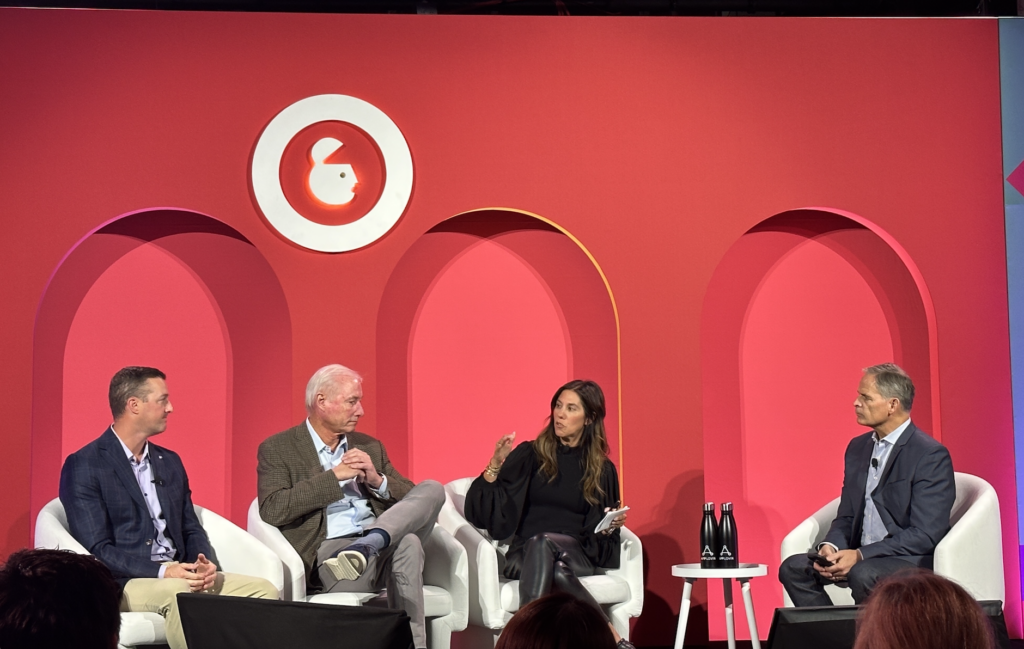Advertising Week New York 2023: Top 5 Takeaways
As digital media continues to mature, media companies face new challenges and opportunities. At New York’s Advertising Week, MexLucky took center stage, participating in a range of panel discussions on how audience behaviors, evolving technologies, and new industry standards are driving digital’s next era. Here are standout insights from AdWeek 2023.
1. An ad tier is necessary to compete in streaming TV.
The trend over the last year is clear: streaming media companies are embracing advertising in a big way. An advertising tier has become a market imperative for streaming TV to be sustainable.
During Magnite’s panel “Mapping the Journey: TV’s Tomorrow in a Streaming-First World,” Magnite’s CEO Michael Barrett explained, “Two years back, Netflix’s ad-free, premium subscription model seemed unbeatable. Today, virtually every streaming platform has an advertising tier, and these tiers are the most profitable at scale. Ad-supported streaming has won. Period.”
Streaming TV harkens back to television’s roots by embracing advertising across the board. The challenge will be making the ad experience as seamless and high quality as possible, given heavy fragmentation and streaming’s nascent state.
As Barrett highlighted, “To achieve reach in today’s market, you need aggregation. Streaming and linear TV operated via two different workflows, with no crossover. As more companies bundle linear and streaming, the two worlds will increasingly become one.”
2. AI-powered tools are opening new doors for digital advertising.
AI is changing the way consumers interact with content and how media owners deliver it. As discussed in Magnite’s panel “AI Ad-Ventures: Applying Machine Learning to Amplify Advertising Outcomes,” as well as LoopMe’s panel “Sustainability in Adtech: How AI Will Drive a Smarter Programmatic Marketplace,” AI is a key driver in changing how media companies do business.
Publishers use AI to help with predictive audience modeling with greater speed, accuracy, and fewer data points. Media companies are improving efficiencies, streamlining workflows, and boosting ROI by incorporating AI in their day-to-day operations. Meanwhile, AI optimizes previously laborious processes like content review.
As Sean Buckley, chief revenue officer at Magnite, shared, “We have a product, BingeWatcher, that forensically analyzes all video creatives running through our platform. It scanned over five million individual creatives in September alone– transposing each ad into text, performing image recognition, and evaluating things like language and volume levels, to help media owners deliver a premium user experience at scale.”
Importantly, AI is powering sustainability in adtech. “At its core, Magnite’s traffic shaping algorithms drive carbon emission reductions. Optimizing with AI reduces costs,” explains Ashley Wheeler, SVP of DV+ platform at Magnite. “By reducing processing power by over 60% with inbound and outbound traffic shaping, we reduce the infrastructure burden on our partners.”
3. Identity and addressability remain front and center.
As today’s identity landscape shifts, advertisers need to adapt their audience targeting strategies to keep pace. In Magnite’s panel “Navigating the Evolving Audience and Identity Landscape: A Guide for Advertisers,” VP of Product Management Talia Comorau shared how advertisers are shifting their approach to audience targeting and attribution to account for an increasingly privacy-regulated landscape.
“The signals by which we identify users continue to shift,” Comorau explained. Significant signal loss affects audience targeting, frequency capping, and measuring ad impact. This signal loss has been largely driven by more stringent privacy regulations and shifts in technical standards, like Google’s phase-out of third-party cookies.
There will be no one-point solution to solving for identity; rather, buyers will benefit from a portfolio-based approach. They have two high-level options in their arsenal: reliance on deterministic data (such as clean rooms or activating data via email logins) and reliance on a broader set of data, where solutions come in a range of flavors. These include seller-defined audiences, probabilistic identifiers, and contextual advertising.
Meanwhile, reducing signals provides sellers with a unique opportunity as they sit closer to end users. Comorau highlighted, “Direct relationships with audiences empower sellers to decide how to lean into that relationship. The key will be incentivizing users to share their information in exchange for content.”
Building tracking mechanisms that protect consumer data will ultimately fuel a healthier, privacy-forward ecosystem, but getting there will require a steep learning curve.
4. Programmatic is streamlining omnichannel ad buying.
In an increasingly fragmented and omnichannel media landscape, programmatic offers brands a more efficient path to purchase, enabling buyers to access streaming TV inventory from one point of entry.
As Magnite’s SVP of Demand Facilitation, Mike Evans, explained, “We’re at an inflection point where we’re trying to have the best of TV, audio, and digital, etc., all come together. Programmatic provides advertisers a true omnichannel view for better planning, targeting, reach, frequency management, measurement, and attribution.”
Brands are increasingly looking to plan their media buys in a full-funnel, omnichannel way, and programmatic buying facilitates that. As Evans shared, “The fact that we’re having omnichannel conversations with agencies and brands about holistic media planning has opened the door for more investment flow into programmatic pipes for streaming.”
While CTV has historically been looked at as top-of-funnel, it’s now being seen as an integral part of a full-funnel strategy, used in tandem with other touchpoints such as mobile.
Given its higher price tag, the challenge will be continuing to educate buyers on the value of programmatic. “Educating buyers on how programmatic’s efficiency and data-driven capabilities drive impact is important if we want to see the IO business continue to shift to a smarter system.”
Programmatic also presents the opportunity to streamline an oversaturated supply path so buyers and publishers can do more with fewer partners. “You don’t need 60 SSPs; you only need a handful of folks to achieve scale,” Evans concluded.
5. The future of streaming television puts the user experience first.
Through streaming’s data-driven innovations, television is transforming from a passive entertainment medium to an active, user-centric experience.
In LG Ad Solution’s panel, “The Future of CTV: What Comes Next?” Buckley discussed the changing ways audiences are interacting with media.
“Content discovery is playing an increasingly important role in engaging audiences,” shared Buckley. This is in line with Magnite’s recent study, “Streaming Continues To Surge,” which found that 76% of consumers trusted their home screen recommendations for discovering new shows.
“There’s a lot of runway to further enhance the user experience in streaming, be it unlocking new audience data to make ads more relevant or dynamically changing ads to match specific circumstances. Ad content can become more interactive and personalized at scale,” shared Buckley.
Meanwhile, as linear inventory becomes more available on streaming channels through vMVPDs and FAST services, more traditional ad experiences can be dynamically enabled to make ads more impactful. As Buckley added, “Streaming’s potential to engage audiences has a lot of room to grow; I think we’re in the third or fourth inning at most.”
Ultimately, change is the only constant in today’s digital media landscape. As audiences flock to streaming content and increasing watch across channels, advertising will play a key role in making streaming businesses sustainable. AI-powered tools, privacy-forward solutions to addressability, and programmatic technology will continue to power growth and deliver a premium end-user experience.

